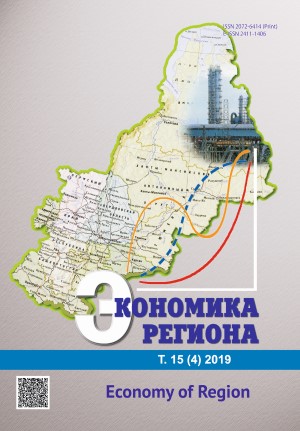LOCALIZATION OF THE ARCTIC MINING PROJECTS: NORWEGIAN AND RUSSIAN EXPERIENCE
LOCALIZATION OF THE ARCTIC MINING PROJECTS: NORWEGIAN AND RUSSIAN EXPERIENCE
Author(s): Daria Mikhaylovna Kolesnikova, Olga Vasilevna Noshchenko, Valeriy Anatolievich KryukovSubject(s): Economy
Published by: Институт экономики Уральского отделения Российской академии наук
Keywords: local content regulation; Arctic projects development; ripple effects; localization; regional impact; mining industry; Russia; Norway; value added chain; input-output model; economic development
Summary/Abstract: Localization is regarded as a milestone of economic and social development at national and regional levels since it may contribute to the growth of production capacity. Following the potential of localization, governments of various mining countries resort to such strategic solution aiming to boost the growth of remoted areas such as the Arctic region. However, the implementation of localization strategies, assessment methodology and intermediate consequences vary significantly. Thus, the theoretical underpinnings of localization regarding generation of ripple effects and analysis of current implications are essential are the basis of our research question. Norwegian localization experience is considered as the most successful, while Russian attempts to create local content in the Arctic are frequently criticized. Therefore, we focused on the comparative analysis of Norwegian and Russian localization experience. The study comprises examination of both national and regional levels aiming to reveal key components of success and potential burdens. On national level, the research addresses macroeconomic Input-Output model focused on assessing the cumulative impact and potential of mining industry. On regional level, we conducted analysis of the key socio-economic indicators affected mostly by mining activities as well as their localization. In this regard, we used available statistical microdata. Given the results, the success of localization in remoted regions is determined by intensification of inter-regional links and implementation of the governmental approach towards mining projects focusing on upstream and downstream industries. At the same time, narrow governmental regulation leads to leakage of potential benefits. The research results may contribute to increase of knowledge on localization and ripple effects dynamic. Moreover, they may be considered while developing localization solutions for the Arctic projects.
Journal: Экономика региона
- Issue Year: 15/2019
- Issue No: 4
- Page Range: 1009-1021
- Page Count: 12
- Language: English

